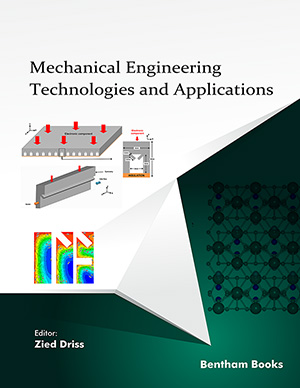
Abstract
Introduction: Simulation of cadmium telluride (CdTe)-based solar cells (CdTe/C2N/SnO2) using Solar Cell Capacitance Simulator-1D (SCAPS-1D) has been presented in this article.
Method: C2N was introduced as a buffer layer, SnO2 was introduced as a window layer, and CdTe was introduced as an absorber layer.
Result: The impact of the thickness of the CdTe, SnO2, and C2N layers, the defect density and carrier concentration of the CdTe layer, and the impact of ambient temperature were analyzed.
Conclusion: The optimized solar cell demonstrated a maximum power conversion efficiency (PCE) of 22.41% with an open circuit voltage (VOC) of 1.07 V, a short circuit current density (JSC) of 23.59 mA/cm2, and an FF of 88.51%, indicating huge promise in low-cost solar energy harvesting.
Keywords: CdTe, C2N, SnO2, solar cell, simulation, SCAPS-1D.
[http://dx.doi.org/10.1002/anie.201915671] [PMID: 31960559]
[http://dx.doi.org/10.1016/j.tsf.2012.11.113]
[http://dx.doi.org/10.1002/anie.202010908] [PMID: 32888248]
[http://dx.doi.org/10.1126/sciadv.ade4589] [PMID: 36598972]
[http://dx.doi.org/10.1038/s41467-023-38343-6] [PMID: 37156781]
[http://dx.doi.org/10.1002/pip.2573]
[http://dx.doi.org/10.1016/j.tsf.2006.12.103]
[http://dx.doi.org/10.1002/pip.704]
[http://dx.doi.org/10.1016/j.tsf.2017.04.036]
[http://dx.doi.org/10.1016/B978-0-323-85529-7.00005-0]
[http://dx.doi.org/10.1038/ncomms7486] [PMID: 25744355 ]
[http://dx.doi.org/10.1038/nnano.2016.304] [PMID: 28192390]
[http://dx.doi.org/10.1039/C9CP05667J]
[http://dx.doi.org/10.1002/anie.201710557]
[http://dx.doi.org/10.1016/j.solener.2020.05.033]
[http://dx.doi.org/10.1002/adma.201702007] [PMID: 28692757]
[http://dx.doi.org/10.1016/j.carbon.2020.02.078]
[http://dx.doi.org/10.1016/j.apsusc.2019.05.040]
[http://dx.doi.org/10.1039/C6TA08924K]
[http://dx.doi.org/10.1016/j.ijhydene.2018.10.165]
[http://dx.doi.org/10.1063/1.4963654]
[http://dx.doi.org/10.1016/j.carbon.2019.10.038]
[http://dx.doi.org/10.1016/S0040-6090(99)00825-1]
[http://dx.doi.org/10.1088/1757-899X/1278/1/012002]
[http://dx.doi.org/10.1016/j.heliyon.2023.e14547] [PMID: 36967952]
[http://dx.doi.org/10.1109/ICAEEE54957.2022.9836410]
[http://dx.doi.org/10.1063/5.0108459]
[http://dx.doi.org/10.1063/1.5132838]
[http://dx.doi.org/10.1155/2023/7208502]
[http://dx.doi.org/10.1016/j.spmi.2015.02.020]
[http://dx.doi.org/10.1063/1.3686651]
[http://dx.doi.org/10.18488/journal.79/2016.3.1/79.1.1.10]
[http://dx.doi.org/10.1088/2053-1591/abcdd6]
[http://dx.doi.org/10.1002/pip.496]





















